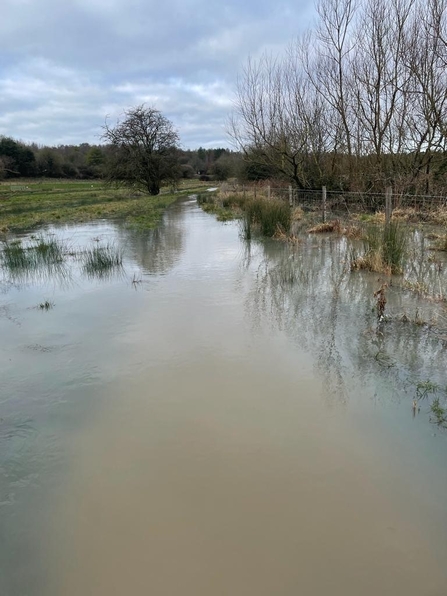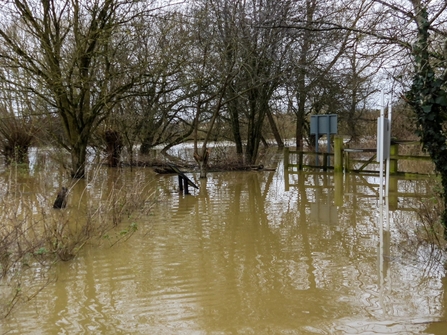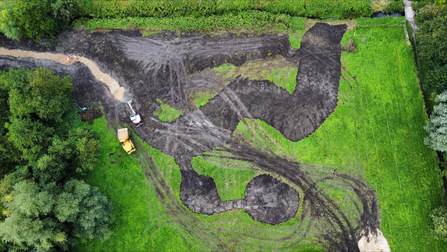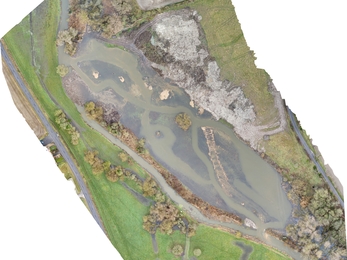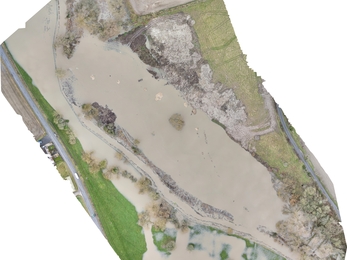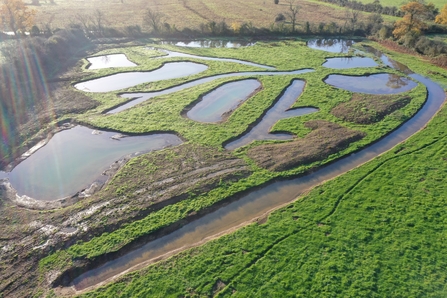Areas across Wiltshire & Swindon experienced a lot of flooding following heavy rain last week, with some homes impacted by flooding and many roads closed as they became unpassable. Areas which were particularly badly affected were Bradford-on-Avon, Marlborough and Pewsey. Over 30 flood warnings still remain in place at the time of writing.
A floodplain is a flat area surrounding a river or stream, which floods when water levels rise.
For example, our Bay Meadows nature reserve flooded last week after the River Og which runs through the centre of the reserve burst its banks. Our volunteer reserve warden Paul took the below photo and told us this is the first time he’s seen the area flood in 20 years.


